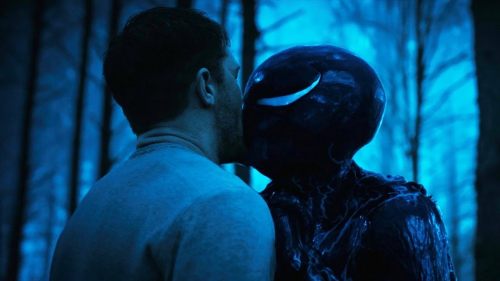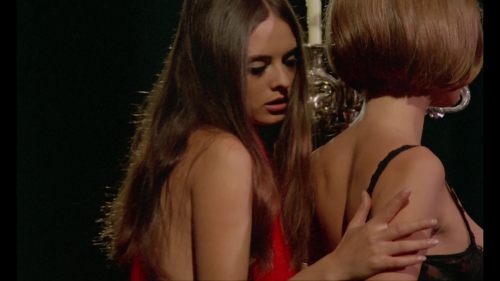Queer Underworld: NIGHTBREED: THE DIRECTOR’S CUT
It’s a common adage that, in fiction, the monster is never just a monster. Horror, science fiction, and fantasy are the venues through which we explore ideas through metaphor and allegory, sometimes unintentionally through the lens of an audience who connects with a work’s themes in a manner specific to them. Such is the case with all manner of LGBTQ cinema, which has often relied on metaphor to smuggle queer themes into cinemas or been subject to queer interpretations after the fact. We at Birth.Movies.Death want to give those queer readings of genre films a voice. This is Queer Underworld.
Clive Barker is perhaps one of the best known openly gay auteurs to have worked in horror, though that doesn’t mean that his work was always as openly gay as he eventually was. The closest Barker ever came to being explicitly queer in his work might have been in 1990’s Nightbreed, though at the time of its release the film was cut down to such a degree that the central themes of ostracism and persecution were muddied in a cut producers mandated be shorter than Barker’s vision allowed. This wasn’t remedied until the release of a director’s cut in 2014, which places on display the full scope of a narrative that is a broad and potent allegory for the persecution of the queer community.
The film opens on a dream by our protagonist, Boone (Craig Sheffer), as he watches monsters revel in a gated world known as Midian. He apparently started seeing a psychiatrist, Dr. Decker (David Cronenberg), to address these “nightmares,” but Boone doesn’t seem concerned by them anymore, even though their frequency is increasing. Decker, however, seems especially concerned with Boone’s psyche, so much so that it appears Decker is bent on proving Boone’s psychological instability. For instance, Boone thinks of Midian as “a place where all your sins would be forgiven,” but Decker latches on to the idea of Boone’s sins without questioning what they might be or who they might be against.
The reason for this soon becomes apparent, though, as Decker proceeds to frame Boone for a series of serial murders that Decker himself has been perpetrating. Boone’s fascination with monsters is a perfect cover for Decker’s own acts of evil, and his efforts to convince Boone of his unconscious guilt lead to a breakdown in which Boone burns his possessions and questions his relationship with his girlfriend, Lori (Anne Bobby).
These scenes essentially involve Boone undergoing a sort of conversion therapy under Decker’s care, a therapy that only serves to destabilize Boone and drive him further away from society in an effort to convince Boone of his own unfounded evil. In effect, Decker wants Boone to accept that the two of them are the same, which can either be read as Decker’s rejection of his own monstrosity through projection onto Boone or as an institutional pressure that is inherently more violent than the emotional outlet Boone is pursuing. For a gay man, particularly in 1990, the pressure to conform with straight society and to repress one’s natural sexual inclinations was powerful and institutionally reinforced, so it’s no huge leap to see Boone’s longing for the society of monsters as a parallel to a gay man’s longing for a nonjudgmental community of peers.
Boone is subsequently hunted by the police for his supposed involvement in Decker’s murderous rampage – which notably targets nuclear families that Decker derogatorily describes as “breeders” – and eventually finds his way to the real Midian, though he is not initially welcomed by the monsters within. He is at first seen as a refugee from the “natural” world, inexperienced in monstrous acts and therefore not corrupted enough to receive entry. Only after being bitten by one of the monsters and subsequently killed by the police is Boone able to embrace his place as a monster in his own right, as one of the Nightbreed.
There’s an uncomfortable allegorical consequence in this perception that one must have experienced trauma to be accepted into a community of outcasts, but the Nightbreed’s reclusive and exclusive nature is well-justified, as Lori’s investigation into Boone’s post-mortem disappearance shows her. Though the Nightbreed share a fascination with blood and are largely atypical in their physicality, they are mostly a society of non-violent citizens to an ancient race known as the Tribes of the Moon, which humanity has systematically sought to eradicate all through its history. The Nightbreed themselves have done nothing to deserve this treatment, but are instead ostracized and mythologized by the simple virtue of being different, and thus have evolved a culture that is insular to their interests and dependent on isolation from the hostile machinations of humankind.
It's interesting, then, that Midian resembles nothing so much as a nightclub, with low lighting and neon glows highlighting the eccentricities of its inhabitants. Clubs are the prototypical venue for queer congregation, providing a safe space for mingling and flirting without fear of being outed or subject to socially condoned correctional violence. The way in which the society of Nightbreed has created its refuge is not dissimilar to communities like San Francisco’s Castro District, which operate under the idea of safety in numbers and freedom from persecution through the establishment of borders and insular culture.
This parallel is only brought home more once Lori and Boone are banished from Midian following Lori’s incursion, and Boone is captured by the police as a suspect to more murders committed by Decker. Boone is held in a small cell and brutalized without hearing or formal charge. The police only recognize that he is different, and so they decide to take it upon themselves to exact violent justice against a man they come to fear for his lack of pulse. This is how institutions, particularly police authorities, have historically treated minority populations, including the gay community, so it serves as open and explicit catharsis once some of Boone’s Nightbreed brethren break him out of his bondage.
This leads Decker and the violent police force to mount a militia of gun-fetishists (whom it’s probably safe to assume vote Republican) in order to lay siege to Midian, and Boone's return reveals him to be a prophesized chosen one destined to lead the Nightbreed out of their ostracism and into the world at large once more. The third act action blowout of this monster movie is effectively a ragtag gang of queer-coded deviant heroes fighting for their lives against the human institutions of police, weaponry, pseudoscience, and order through conformity, with Decker, the human manifestation of prejudice and violence born from hypocrisy and self-hatred, acting as the main antagonist to Boone as a literal messiah. Allegory doesn’t get much blunter than that.
Some of Nightbreed’s climactic moments are somewhat undercut by set-ups for a sequel that would never come to pass and a resolution to Boone and Lori’s relationship conflict that feels forced given Lori’s sole function as an audience point-of-view character, but taking the film as a whole it’s hard to deny that it’s easily read as an allegory for queer liberation, perhaps aspirational when Clive Barker made the film but probably more timeless than even Barker knew, given how queer rights only ever seem to be won in fits and starts with inevitable caveats, stipulations, and backsliding. Barker appears to have found refuge from his own persecution in the world of monsters, which makes a certain amount of sense. After all, if the world is content to treat you as a monster, what’s the harm in romanticizing the prospect of becoming one?
If you have suggestions for genre films that deserve a queer examination, lay them out in the comments below or tweet at @LeighMonsonPBF.



